I still remember my first encounter with a Spanish story – struggling through “El Gato y el Ratón” with a dictionary in one hand and sheer determination in the other. That simple fable opened doors to a world where language learning transformed from memorizing boring verb conjugations into experiencing rich narratives that made grammar feel natural and vocabulary stick without the torture.
Look, I get it – you’re probably one of the millions of people trying to learn Spanish right now. Maybe you’re tired of Duolingo’s passive-aggressive owl, or maybe you just want to actually understand what’s happening in your favorite Netflix shows without squinting at subtitles. Over 20 million students study Spanish as their foreign language each year, making it the second most studied language globally according to Iberia Language Academy. These carefully selected Spanish stories across six distinct categories will accelerate your Spanish learning journey through authentic cultural immersion and practical language application – without making you want to throw your phone across the room.
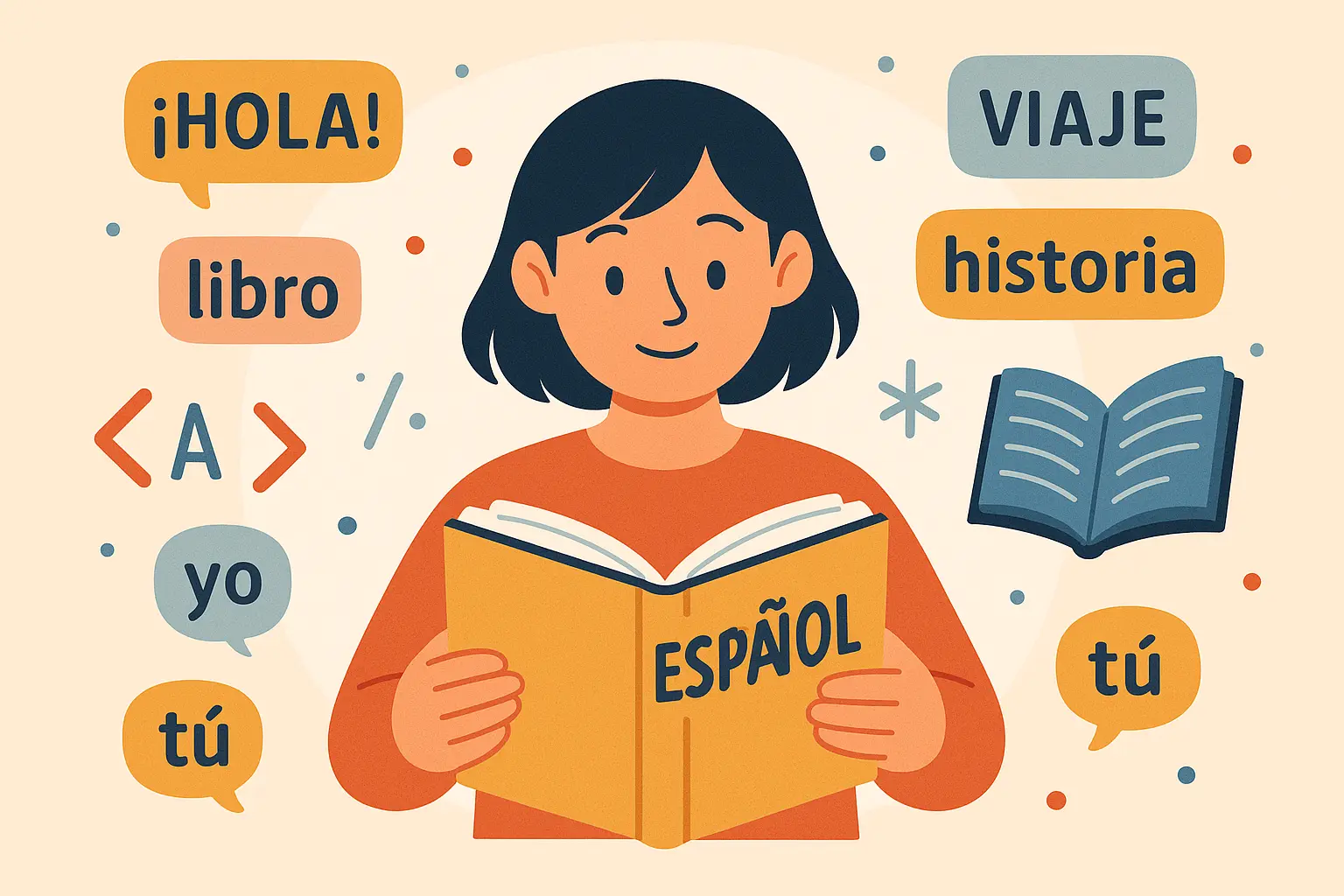
Table of Contents
-
Essential Considerations When Selecting Spanish Stories
-
25 Top Spanish Stories Across 6 Categories
-
Beginner-Friendly Spanish Short Stories
-
Intermediate Spanish Stories with Cultural Depth
-
Advanced Literary Spanish Stories
-
Spanish Stories for Specific Learning Objectives
-
Regional Spanish Stories
-
Digital and Interactive Spanish Stories
-
-
Detailed Story Analysis and Examples
-
Story Assessment Using Selection Criteria
-
How Nairrate Can Enhance Your Spanish Story Creation
-
Final Thoughts
TL;DR
-
Pick Spanish stories that match your level – don’t be a hero and jump into advanced stuff when you’re still figuring out basic verbs
-
Audio is your best friend for pronunciation and actually hearing how Spanish should sound
-
Free Spanish short stories are totally legit starting points (your wallet will thank you)
-
Stories with real cultural stuff beat generic textbook tales every single time
-
Interactive stories keep you engaged when your attention span starts wandering
-
Grammar-focused stories teach you complex stuff like subjunctive mood without the headache
-
Regional stories show you how Spanish actually sounds around the world (spoiler: it’s wildly different)
Essential Considerations When Selecting Spanish Stories
Here’s the thing nobody tells you: picking the wrong story for your level is like trying to run a marathon when you can barely jog around the block. You’ll just end up frustrated and reaching for Google Translate every five seconds.
Your Spanish proficiency level is your North Star here. If you’re just starting out, you want stories that don’t make your head spin – think simple present tense and words you might actually use, like “cat,” “house,” and “hungry.” Advanced readers can handle the fancy stuff with complex grammar patterns, literary devices, and cultural references that’ll make you feel like you’re earning a literature degree.
Story length matters more than you think. We’ve all been there – staring at a massive wall of Spanish text like it’s written in hieroglyphics. Short stories are your friend because you can actually finish them in one sitting and feel like you accomplished something. Trust me, that confidence boost is worth its weight in gold.
|
Proficiency Level |
Vocabulary Range |
Grammar Focus |
Story Length |
Cultural Complexity |
|---|---|---|---|---|
|
Beginner (A1-A2) |
300-1,000 words |
Present/Past tense |
200-500 words |
Universal themes |
|
Intermediate (B1-B2) |
1,000-3,000 words |
Subjunctive/Conditional |
500-1,500 words |
Regional customs |
|
Advanced (C1-C2) |
3,000+ words |
Complex structures |
1,500+ words |
Literary/Historical |
Audio availability is a game-changer. Stories with decent narration help you connect written text with how Spanish actually sounds when real people speak it. This isn’t just about pronunciation – it’s about understanding rhythm, intonation, and all those subtle things that make you sound less like a robot reading from a phrasebook.
Let’s talk money – because nobody wants to go broke learning a language. Free Spanish short stories are totally legit and often just as good as the paid stuff. Many digital platforms offer solid collections without charging you a penny, which means you can build a whole library without eating ramen for a month.
The best learning stories come with backup – vocabulary lists, comprehension questions, cultural context that actually makes sense. These extras turn a simple story into a complete learning experience instead of just another confusing text you’re trying to decode.
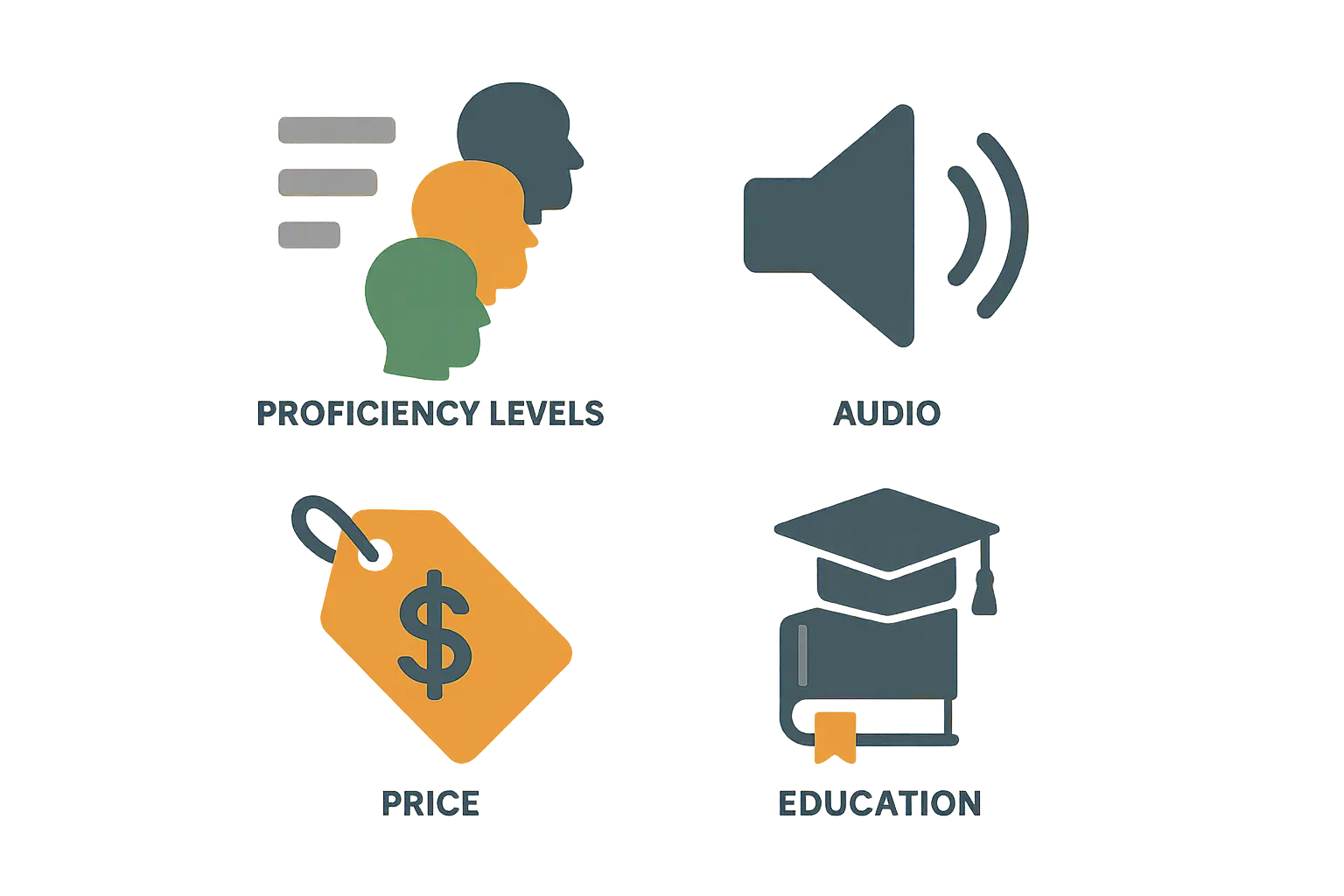
25 Top Spanish Stories Across 6 Categories
Okay, here’s where the magic happens. I’ve organized 25 Spanish stories into six categories that actually make sense for real learners. Each category serves a purpose – from building your confidence with beginner-friendly tales to diving deep into regional differences that’ll save you from embarrassing cultural mix-ups. Every story has been picked to maximize your learning while keeping you entertained enough to actually finish reading them.
Beginner-Friendly Spanish Short Stories
These five stories are perfect when you’re tired of textbook Spanish but not ready to tackle Cervantes. They use simple vocabulary, basic grammar, and universal themes that won’t leave you scratching your head. Spanish short stories for beginners should feel like a gentle introduction to the language, not a pop quiz from hell. Simple stories in Spanish provide the perfect foundation without making you want to give up and stick to English forever.
For those just starting their creative journey, exploring a short story generator can provide inspiration for creating your own beginner-friendly Spanish narratives.
1. “El Gato y el Ratón” (The Cat and the Mouse)
This little gem is perfect when you’re ready to move beyond “Hola, me llamo…” It’s about a lazy cat who thinks he’s hot stuff until a clever mouse shows him who’s boss. You’ll pick up animal words without even trying, and honestly, the mouse’s attitude is pretty inspiring for language learners.
Complete Story Text:
“Había una vez un gato muy perezoso que vivía en una casa grande. El gato dormía todo el día en su cama suave. Un ratón pequeño vivía en la misma casa. El ratón era muy inteligente y rápido. Cada día, el ratón buscaba comida en la cocina. El gato intentaba atrapar al ratón, pero el ratón siempre escapaba. Un día, el ratón tuvo una idea brillante. Puso queso cerca de la cama del gato. Cuando el gato se despertó y vio el queso, corrió hacia él. Pero el ratón había puesto una trampa. El gato cayó en una caja y no pudo salir. Desde ese día, el ratón vivió feliz y libre en la casa.”
What You’ll Actually Learn:
-
Animals and house stuff: gato, ratón, casa, cama, cocina
-
Describing words that don’t suck: perezoso, inteligente, rápido
-
Past tense that makes sense: había, vivía, dormía
2. “Mi Familia” (My Family)
A straightforward story that introduces family vocabulary without getting weird about it. You’ll learn to describe people and relationships while picking up possessive pronouns naturally – no grammar drills required.
3. “Un Día en la Escuela” (A Day at School)
Follow a student through their school day and learn classroom vocabulary that’s actually useful. Perfect for picking up time expressions and daily routine language without feeling like you’re back in elementary school yourself.
4. “El Mercado” (The Market)
A shopping adventure that teaches you food vocabulary and numbers through traditional Spanish market interactions. You’ll learn bargaining phrases and vendor conversations – basically, how to not get ripped off when traveling.
5. “La Fiesta de Cumpleaños” (The Birthday Party)
This celebration story introduces party vocabulary and cultural traditions through birthday festivities. Great for learning social interaction phrases and understanding how Hispanic celebrations actually work.
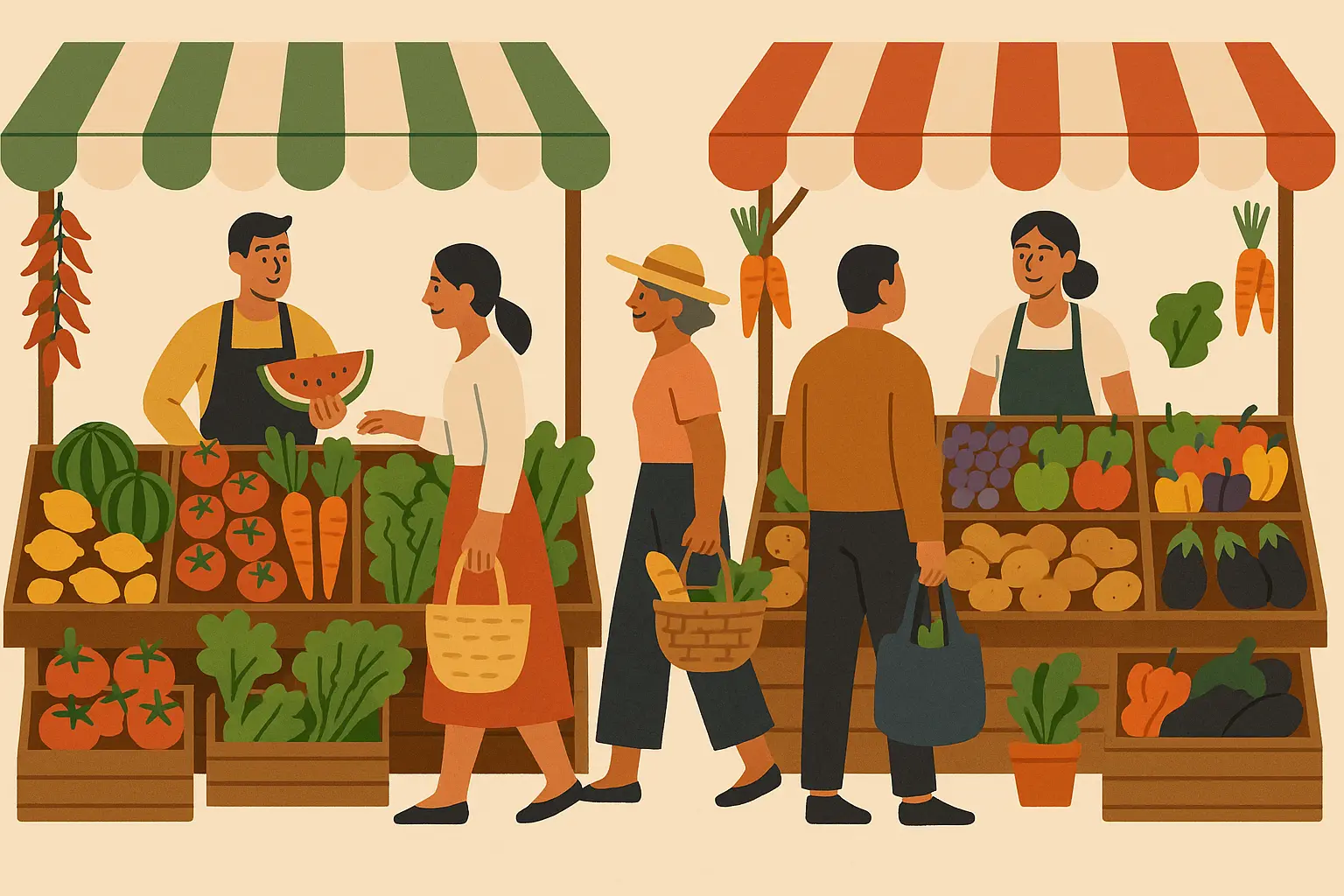
Intermediate Spanish Stories with Cultural Depth
Heads up – this is where things get spicy. You might find yourself looking up words you swear you knew five minutes ago. That’s totally normal. These five stories challenge intermediate learners with complex grammar structures, cultural references, and varied narrative techniques that’ll mess with your confidence a bit, but in a good way. Spanish with stories at this level is like going from training wheels to a real bike – scary but exhilarating.
6. “Tradiciones de Día de los Muertos”
An immersive dive into Mexican Day of the Dead traditions that’ll teach you way more than any tourist guide. Features intermediate vocabulary about cultural practices and spiritual beliefs while showing you how flashbacks and multiple perspectives work in Spanish storytelling.
7. “El Barrio que Cambió”
A nostalgic tale about urban transformation that’ll hit you right in the feelings. This story incorporates subjunctive mood and conditional tenses naturally while exploring themes of modernization versus tradition – perfect for understanding how Spanish handles complex emotions.
8. “Cartas desde Argentina”
Told through family letters separated by immigration experiences, this story teaches you formal and informal Spanish registers without making it feel like a lesson. You’ll learn letter-writing conventions and emotional vocabulary while getting invested in the family’s story.
9. “El Secreto del Abuelo”
A mystery involving family secrets that incorporates intermediate vocabulary about family history and emotions. The narrative structure includes dialogue and internal monologue that’ll challenge your reading comprehension in the best way.
10. “Aventura en los Andes”
An adventure story set in the Andes Mountains featuring survival situations and nature descriptions. You’ll learn conditional and hypothetical language structures while getting cultural context about Andean communities – way more interesting than textbook exercises.

Advanced Literary Spanish Stories
Fair warning: these aren’t your typical easy-reading stories. These five sophisticated narratives will challenge advanced learners with complex techniques, philosophical themes, and literary devices that require serious cultural knowledge. While these definitely aren’t simple stories in Spanish, they reward dedicated readers with rich literary experiences and deep cultural insights that’ll make you feel like you actually “get” Spanish culture.
11. “Realismo Mágico: La Casa de los Espejos”
A sophisticated magical realism story that’ll bend your brain in the best way. This story explores identity and reality through metaphorical language and intricate plot structures that challenge advanced readers with literary devices and cultural symbolism that’s deeply rooted in Latin American tradition.
Opening Passage Analysis:
“La casa parecía haber crecido de la tierra misma, como si hubiera germinado de semillas plantadas por sueños olvidados. Sus espejos reflejaban no lo que era, sino lo que podría haber sido, creando laberintos de realidades paralelas donde el tiempo se doblaba sobre sí mismo como origami temporal.”
What Makes This Advanced:
-
Pluperfect Subjunctive: “como si hubiera germinado” (this is the stuff that makes intermediate learners cry)
-
Conditional Perfect: “podría haber sido” (complex time relationships)
-
Literary magic: Metaphors, personification, and cultural references that require serious background knowledge
12. “Crónica de una Revolución”
Historical fiction examining social revolution through multiple perspectives. Features advanced political vocabulary and complex grammatical structures including passive voice – basically, everything that makes Spanish grammar challenging rolled into an engaging narrative.
13. “El Laberinto del Tiempo”
A science fiction narrative exploring temporal themes through advanced techniques. Incorporates technical vocabulary and philosophical concepts that’ll stretch your Spanish comprehension to its limits.
14. “Monólogo Interior”
A stream-of-consciousness narrative exploring human psychology through advanced vocabulary related to emotions and introspection. Non-linear narrative structure that challenges readers with complex grammatical constructions.
15. “Alegoría del Poder”
A political allegory examining power structures through advanced vocabulary related to politics and philosophy. Features sophisticated literary devices that require cultural knowledge for full comprehension.
Spanish Stories for Specific Learning Objectives
These four targeted stories address specific grammar points and vocabulary themes through natural narrative contexts. Instead of drilling conjugations until your eyes bleed, these stories teach particular aspects of Spanish language through engaging narratives that actually make sense. Short stories to learn Spanish with specific objectives provide focused practice while keeping you entertained.
When developing targeted learning materials, using a story theme generator can help create focused narratives around specific grammatical concepts.
16. “Gramática en Acción: El Subjuntivo”
Specifically designed to teach subjunctive mood usage without making you want to throw your textbook out the window. The narrative incorporates doubt, emotion, desire, and hypothetical situations that naturally require subjunctive constructions – you’ll learn the patterns without memorizing endless conjugation charts.
17. “Vocabulario Profesional: En la Oficina”
A workplace-focused story introducing business Spanish vocabulary and professional communication styles. Features office scenarios and meeting language that provide practical skills for professional Spanish usage – actually useful stuff.
18. “Diálogos Auténticos: Conversaciones Cotidianas”
A collection of realistic dialogue scenarios covering common social situations. Features natural conversation patterns and colloquial expressions that’ll help you soun
A collection of realistic dialogue scenarios covering common social situations. Features natural conversation patterns and colloquial expressions that’ll help you sound less like a textbook and more like a real person.
19. “Tiempos Verbales: Una Historia Completa”
A comprehensive story showcasing all major Spanish tenses in natural context. Each section emphasizes different temporal relationships while maintaining narrative continuity – basically a practical grammar reference disguised as entertainment.

Regional Spanish Stories
Here’s where it gets fun – Spanish isn’t just Spanish. It’s like how people from New York and Texas both speak English, but… well, you know. These three stories showcase linguistic diversity across Spanish-speaking regions, featuring distinct dialects, cultural references, and pronunciation patterns. Spanish stories from different regions offer invaluable exposure to the rich diversity of Spanish-speaking cultures and will save you from that awkward moment when you use Mexican slang in Spain and everyone looks at you funny.
20. “Voces de Andalucía”
A story showcasing Andalusian dialect and culture through regional vocabulary, pronunciation patterns, and cultural references specific to southern Spain. You’ll learn about flamenco culture and local customs while picking up how Spanish actually sounds in Andalusia.
21. “Cuentos Mexicanos Contemporáneos”
Modern Mexican stories featuring contemporary urban life and cultural challenges through Mexican Spanish vocabulary and cultural references. Provides insight into modern Mexican society and authentic language usage patterns that’ll help you understand actual Mexican Spanish.
22. “Relatos del Río de la Plata”
Stories from Argentina and Uruguay featuring regional linguistic characteristics and cultural themes. You’ll learn distinctive vocabulary and pronunciation patterns from the Rio de la Plata region – including that famous Argentine accent.
|
Region |
Key Vocabulary Differences |
Pronunciation Features |
Cultural Themes |
|---|---|---|---|
|
Spain (Andalucía) |
“Vale” (okay), “Tío/Tía” (dude) |
Dropped ‘s’ sounds, soft ‘c’/’z’ |
Flamenco, tapas culture |
|
Mexico |
“Órale” (wow), “Platicar” (chat) |
Clear pronunciation, indigenous influences |
Day of Dead, family traditions |
|
Argentina |
“Che” (hey), “Vos” (you) |
Strong ‘ll’/’y’ sounds |
Tango, European immigration |
Digital and Interactive Spanish Stories
Interactive stories are cool in theory, but let’s be real – sometimes you just want to read without clicking a million buttons. That said, these three innovative stories leverage technology to create engaging, multimedia learning experiences that actually work. Spanish stories with audio provide enhanced pronunciation practice and listening comprehension development. The choose-your-own-adventure ones are actually pretty addictive. Fair warning: you’ll probably replay them just to see what happens if you make the “wrong” choice.
For educators looking to create engaging digital content, exploring a story plot generator can help develop compelling interactive narratives that maintain student interest throughout the learning process.
23. “Historia Interactiva: Elige tu Aventura”
A choose-your-own-adventure story format that engages readers in decision-making while practicing Spanish. You’ll learn decision vocabulary and consequence language through branching narratives with multiple reading paths that keep you coming back for more.
Interactive Decision Point:
“Te encuentras en la entrada de una cueva misteriosa en las montañas de Perú. Puedes escuchar sonidos extraños viniendo del interior. ¿Qué decides hacer?
A) Entrar en la cueva con tu linterna → (Continúa en página 15)
B) Buscar otro camino alrededor de la montaña → (Continúa en página 23)
C) Acampar aquí y esperar hasta la mañana → (Continúa en página 31)
What You’ll Pick Up:
-
Decision vocabulary: “decidir,” “elegir,” “optar por”
-
Conditional structures: “Si eliges A, entonces…”
-
Adventure vocabulary: “cueva,” “linterna,” “acampar”
-
Future planning: “¿Qué vas a hacer?” “Voy a…”
24. “Multimedia: Historia con Audio y Video”
A comprehensive multimedia story combining text, audio narration, and visual elements. Features professional Spanish voice acting and cultural video segments that support multiple learning styles – though you’ll need decent internet for the full experience.
25. “Historia Social: Comentarios y Discusión”
A story designed for social learning platforms with integrated discussion features. Includes comprehension questions and cultural discussion prompts that encourage community learning and conversation practice with other learners.

Detailed Story Analysis and Examples
Let me break down three representative stories from different proficiency levels so you know exactly what you’re getting into. These detailed breakdowns help you understand what to expect from each story category without any surprises.
The simple example “El Gato y el Ratón” demonstrates beginner-level Spanish through a complete story text featuring basic animal vocabulary, house-related terms, and simple adjectives. The grammar focuses on present tense and simple past without throwing curveballs at new learners.
“Realismo Mágico: La Casa de los Espejos” represents advanced literary Spanish through complex passages that incorporate pluperfect subjunctive and conditional perfect tenses – basically, the grammar that makes intermediate learners question their life choices. This story requires understanding of Latin American magical realism traditions and advanced architectural and philosophical terminology.
The interactive example “Historia Interactiva: Elige tu Aventura” showcases decision-based learning through branching narrative structures. Each choice point teaches specific vocabulary themes while incorporating conditional structures and future planning language in natural, engaging contexts.
Spanish short stories at different levels reveal distinct patterns in complexity and cultural depth. Simple stories maintain universal themes and straightforward vocabulary, while advanced narratives demand sophisticated cultural knowledge and literary appreciation.
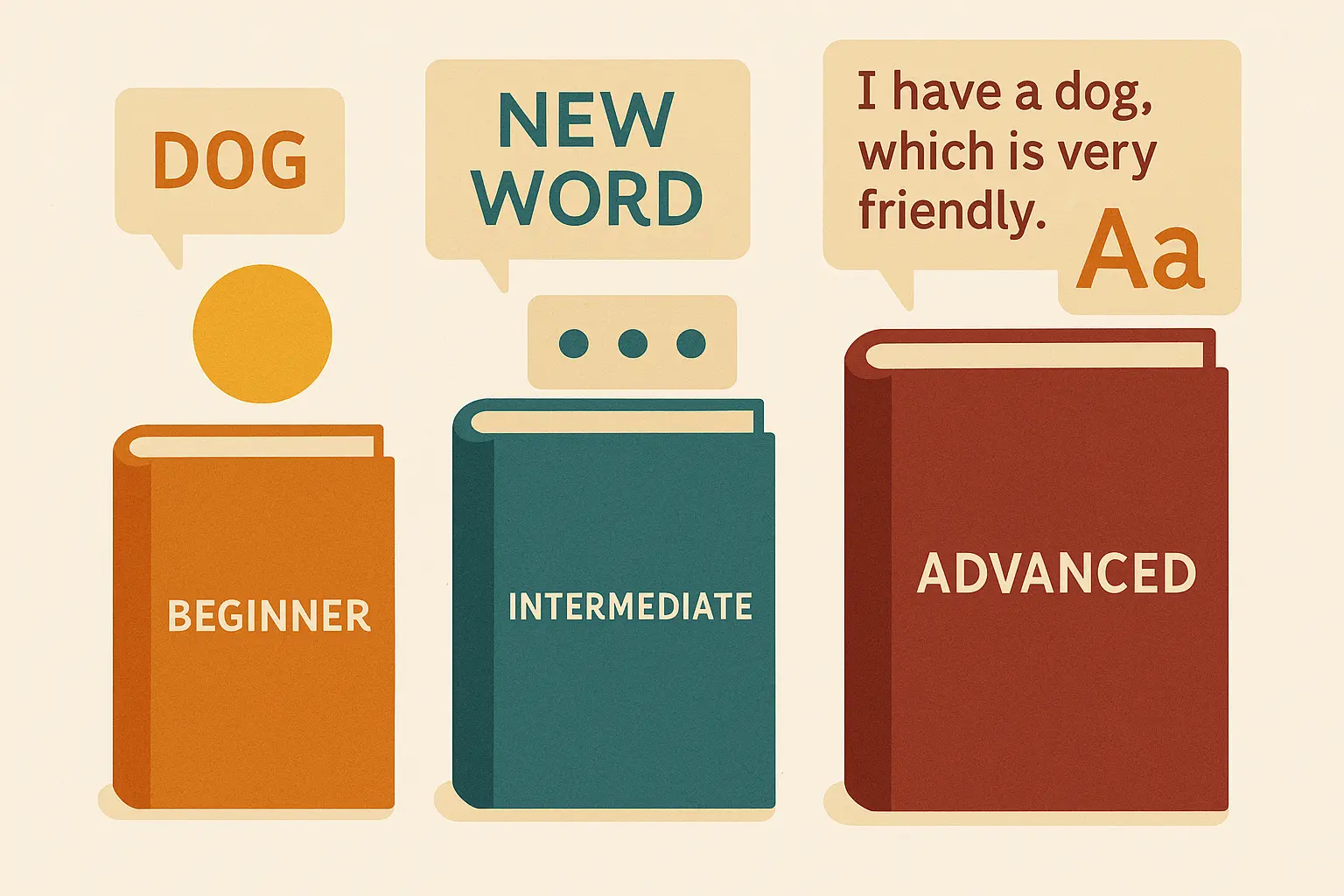
Story Assessment Using Selection Criteria
Look, I’m gonna be straight with you about these star ratings. This comprehensive evaluation system rates stories across five key criteria using a five-star scale, helping you make informed decisions about which stories best match your learning needs, technical requirements, and budget constraints. Five stars for cost usually means “free” – and yes, free can be amazing. But sometimes you get what you pay for.
|
Story Title |
Proficiency Level |
Audio Available |
Cost |
Educational Support |
Cultural Authenticity |
|---|---|---|---|---|---|
|
El Gato y el Ratón |
⭐⭐⭐⭐⭐ |
⭐⭐⭐ |
⭐⭐⭐⭐⭐ |
⭐⭐⭐⭐ |
⭐⭐⭐⭐⭐ |
|
Realismo Mágico |
⭐⭐ |
⭐⭐⭐⭐ |
⭐⭐⭐ |
⭐⭐⭐⭐⭐ |
⭐⭐⭐⭐⭐ |
|
Historia Interactiva |
⭐⭐⭐ |
⭐⭐⭐⭐⭐ |
⭐⭐ |
⭐⭐⭐⭐⭐ |
⭐⭐⭐ |
|
Voces de Andalucía |
⭐⭐⭐ |
⭐⭐⭐⭐ |
⭐⭐⭐ |
⭐⭐⭐ |
⭐⭐⭐⭐⭐ |
|
Multimedia Historia |
⭐⭐⭐ |
⭐⭐⭐⭐⭐ |
⭐⭐ |
⭐⭐⭐⭐⭐ |
⭐⭐⭐⭐ |
That one-star audio? Probably sounds like it was recorded in someone’s closet with their phone. The five-star audio? Chef’s kiss – you’ll actually want to listen to it. “El Gato y el Ratón” scores high on cultural accessibility and cost factors while maintaining low complexity in vocabulary and grammar. Perfect for beginners who want to feel accomplished instead of defeated.
Format and accessibility analysis highlights the trade-offs between comprehensive learning support and practical constraints. “Multimedia: Historia con Audio y Video” provides excellent learning support through professional audio narration and integrated video elements but requires reliable internet connections and compatible technology. Free resources offer broad accessibility but may lack consistent quality and educational support materials.
Educational value assessment demonstrates how targeted stories serve specific learning objectives. “Gramática en Acción: El Subjuntivo” excels in targeted learning and practical application while maintaining natural context integration. Regional stories provide maximum cultural authenticity and linguistic variety but may have limited practical relevance depending on your specific Spanish learning goals.
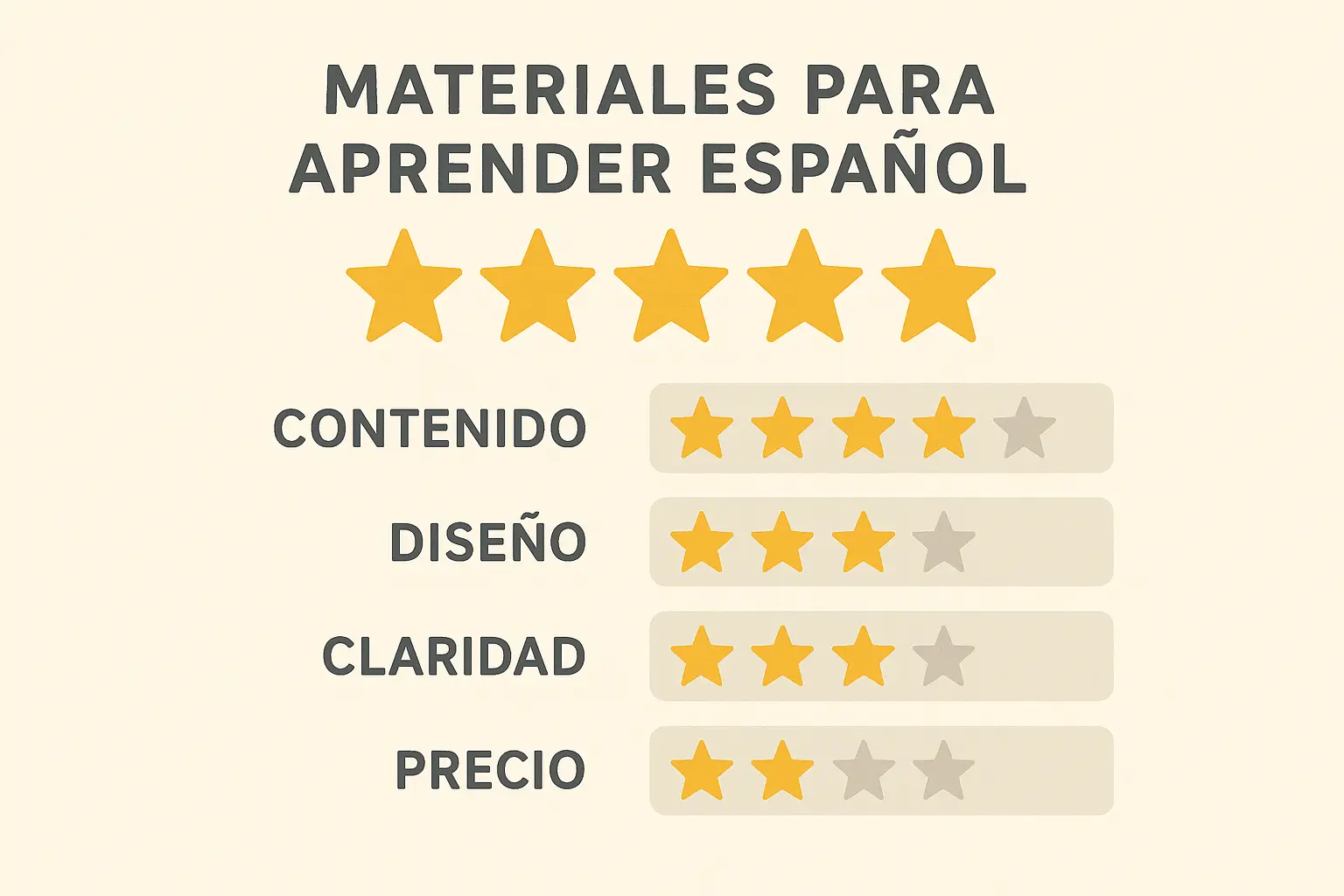
How Nairrate Can Enhance Your Spanish Story Creation
Here’s where things get really interesting. Many Spanish learners struggle with the transition from reading comprehension to actually creating their own stories. Nairrate’s AI-powered story generation tools bridge that gap, offering creative support that scales with your developing language skills while addressing common writing challenges faced by Spanish learners.
Trust me on this one – when you’ve mastered simple Spanish stories and want to challenge yourself with creative writing, Nairrate’s story starters generator provides compelling opening lines in Spanish that set appropriate tones for narrative practice. Whether you’re crafting mysterious tales to practice subjunctive mood or developing romantic stories to work on emotional vocabulary, the AI understands what makes Spanish stories compelling.
The Story Prompt Generator offers creative challenges that push you to explore new narrative possibilities without making your brain explode. The AI gets both language learning needs and creative storytelling principles, so you’re not just getting random prompts – you’re getting targeted practice opportunities.
The journey from consuming Spanish short stories to creating your own narratives requires tools that understand both language learning needs and creative storytelling principles. Nairrate can generate story ideas that incorporate specific grammatical structures you’re studying, cultural themes you want to explore, or vocabulary sets you need to practice while maintaining authentic dialogue for characters from different Spanish-speaking regions.
Spanish with stories becomes even more powerful when you actively participate in the creative process. Ready to transform your Spanish learning from passive reading to active creation? Try Nairrate’s AI-powered story tools and discover how creative writing can accelerate your path to Spanish fluency.
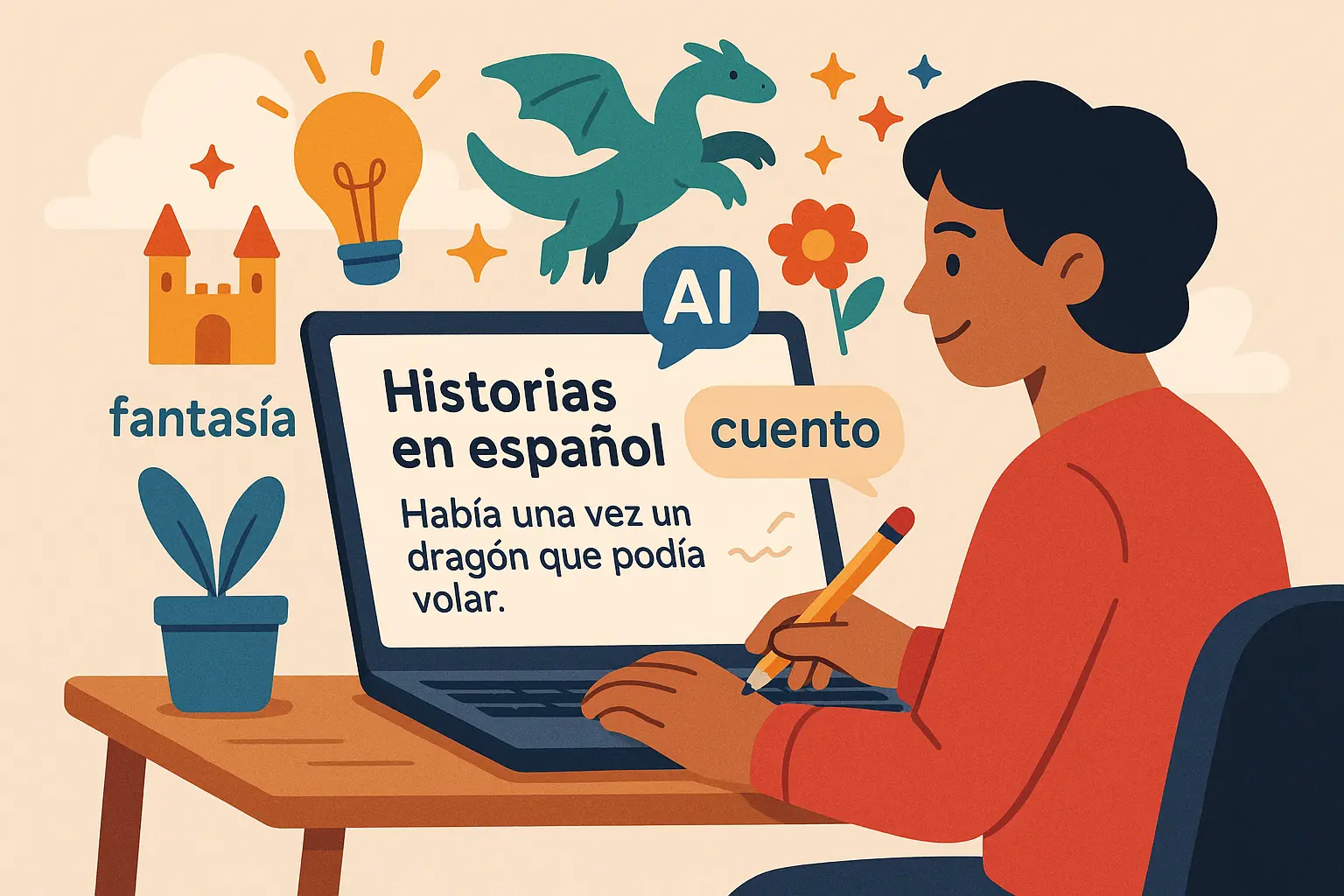
Final Thoughts
Here’s my honest take after years of trial and error: your Spanish learning journey through stories represents more than vocabulary acquisition and grammar practice – it’s a pathway to cultural understanding and authentic communication that actually matters in real life. These 25 carefully selected stories provide structured progression from basic comprehension to sophisticated literary analysis, ensuring you develop both language skills and cultural awareness without wanting to give up halfway through.
Story selection should align with your current proficiency level while gently pushing your comfort zone. Start with beginner-friendly tales if you’re new to Spanish, but don’t be afraid to explore intermediate stories when you feel ready for greater complexity. The key is finding that sweet spot where stories remain comprehensible yet engaging enough to keep you motivated when the going gets tough.
Don’t worry if audio availability, cultural authenticity, and educational support materials seem overwhelming at first. Free resources provide excellent starting points, but investing in quality stories with comprehensive support materials often accelerates progress and deepens understanding of Spanish-speaking cultures in ways that generic textbooks never could.
Whether you choose traditional print stories, interactive digital narratives, or multimedia experiences, consistency in reading practice will yield the most significant results. I still remember the first time I actually understood a whole paragraph without looking anything up – it felt like winning the lottery. You’ll get there too, probably faster than you think.
Your Spanish fluency journey through stories is uniquely yours – embrace the process, celebrate small victories, and allow these narratives to guide you toward confident Spanish communication. And hey, if all else fails, at least you’ll have some good stories to tell about your Spanish learning adventures.



Add comment